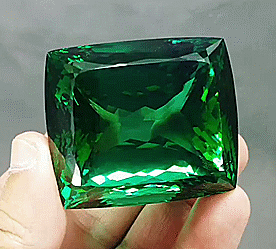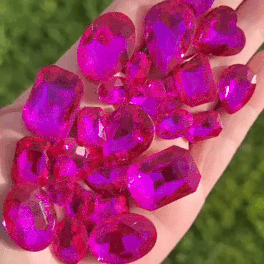#sly blue fictive
Explore tagged Tumblr posts
Text
intro post i guess
-
name: Sly, Sly Blue, Desire
age: 18-19 [bodily 19 as of nov 8th, 2023]
pronouns: he/they/it
gender: agender androgynous transneumasc boygirl
orientation: fagdyke, faggot, dyke, bi gay, bi lesbian, gay, lesbian
extra: fictive in a system, not a rp blog, but i dont mind rping and being treated like a character
-
i'm an adult, i post adult things sometimes. minors need to not follow me. If i notice a minor interacting with any nsfw posts, i will block them.
my stances real quick: im pro endo, i dont participate in shipcourse, i reclaim slurs and identify with some of them [dyke, fag, tranny, etc], i type in lowercase a lot on purpose, i curse a lot, and im connected to my source.
fuck off if you're planning on being an ass, i'll just make fun of you
#intro post#sly blue dmmd#sly blue#dmmd#blog intro#introductory post#introduction post#pinned intro#pinned post#dmmd fictive#sly blue fictive#sly fictive#dramatical murder fictive#dmmd sly fictive#dmmd sly blue fictive
2 notes
·
View notes
Note
I hate having the urge to self sabotage by doing risky things when Aoba is away from front. I want to protect us, but then I get urges to do bad things that I know would hurt us. And I don't know why. I don't know why I do these things. I just want to understand why I'm like this, and I can never comprehend what made me have these awful feelings.
I'm so sorry Aoba. I just want to be good for both of us.
— Sly Blue, DMMD Fictive
x
4 notes
·
View notes
Text










"hello could we perhaps get a sly cooper fictive stimboard w themes of blue, gems, the night/stars, and the ocean? (and if you can, minor pink and green themes? no biggie if not)"
~💖 Bebe
X | X | X
X | X | X
X | X | X
#bebe's gifts#stimboard#stim#fictive#sly cooper#star#stars#galaxy#galaxies#space#waves#ocean#sea#water#gem#gemstones
27 notes
·
View notes
Text

guys pls look at this stupid fucking system meme I made for our sly
149 notes
·
View notes
Text
Systems that have Sly Blue fictives be unhinged as fuck...
Keep winning, kings.
8 notes
·
View notes
Note
and finally, playlist for sly blue/desire from dramatical murder if you're comfy with that!! he likes more tecnho/dubstep but also rock etc ^^
sorry for so many reqs ^^"
oh and we're all fictives c:
You got it! Also no need to apologize, we're really glad you like our stuff!!
Mod Haze
0 notes
Note
hey i'm sly blue from dramatical murder looking for trip, virus and ren. im a fictive and 19 so 18+ only please. like/reblog or hmu @sly-blew
!!!
1 note
·
View note
Note
Tbh? I wish i had the ability to scrap people like in source. I just wanna break some fucking minds is that too much to ask??? -a Sly Blue fictive with some anger issues
#fictionkinfessions#fictive#slybluekin#dramaticalmurderkin#torture cw#abuse cw#*gestures towards n*zis* pls n thnx....#nazism cw in tags#Anonymous#mod party cat!
3 notes
·
View notes
Text
Hyperallergic: The Many Shades of Glenn Ligon’s Blue Black
Installation shot of Glenn Ligon’s “A Small Band” (2015), neon and paint, 74 3/4 x 797 1/2 inches (189.86 x 2025.65 cm, with Ellsworth Kelly’s “Blue Black” (2000) in the background. (Ligon image courtesy of the artist; Thomas Dane Gallery, London; Luhring Augustine, New York; Regan Projects, Los Angeles, © Glenn Ligon, photo © Alise O’Brien Photography)
ST. LOUIS — In the entrance gallery of the Pulitzer Arts Foundation are a series of figurative painting, sculpture, and a photographic print all staring at each other. This scene of interiority opens the group exhibition Blue Black curated by the artist Glenn Ligon. Kerry James Marshall’s central character in “Untitled (policeman)” (2015), wearing his standard issue, navy blue Chicago Police Department uniform, hand on his hip, looks out in a moment of reflection, at the boy on the other wall in Carrie Mae Weems’ “Blue Black Boy” (1997), whose eyes gape. The peering of the boy represents an image born out of black cultural looking and the white historical gaze. The first is perceived if you focus on the officer’s eyes which make present the knowing glance of a black father at his son. The other image this looking relationship produces, in my mind, is what happens when the effects of the white gaze is recognized to be more than a theoretical construct but something representative of systemic power structures that have real life consequence. Under the white gaze, the black child becomes another black boy, like Michael Brown and the officer, representative of the history of law enforcement as an institution that polices black bodies unjustly, his race evaporates, he is simply an agent of the state, like the white patrolman, Darren Wilson. The looks that passed between Wilson and Brown brought about the final moments of Brown’s life because Wilson, per his testimony, saw the unarmed 18 year-old black boy as a “demon” in that suburban St. Louis street.
Carrie Mae Weems, “Blue Black Boy (1997), blue-toned print, 15 3/8 x 15 1/4 inches (39 x 38.7 cm) Framed: 31 1/8 x 31 1/8 x 1 7/16 inches (79.1 x 79.1 x 3.8 cm) (Collection Jack Shainman, New York, © Carrie Mae Weems. Courtesy of the artist and Jack Shainman Gallery, New York)
If you walk into the frame of Weems’ photograph, which is to say the blue black boy’s line of vision, your presence is mirrored back — you are looking and looked at. If you don’t walk into his line of sight, he peers out at Jack Whitten’s abstracted version of himself in “Self Portrait I” (2014). The hang of all the mounted works is inspired by Lynette Yiadom-Boakye’s exhibiting technique that places her black fictive figures within eyesight of each other. In this gallery, Ligon places Yiadom-Boakye’s “Messages from Elsewhere,” a 2013 oil of a black female figure wearing a lapis lazuli dress, gazing over her shoulder, lost in contemplation. She’s daydreaming in the direction of Whitten’s face. Sitting in the center of the room is Simone Leigh’s sightless femme terracotta statuette, “Dunham” (2017), sporting an afro. There’s something spiritual about the way she sees nothing, yet is seen by every figure in the room.
If the figures are looking, they must be thinking, searching, and seeing too. But what are they searching and seeing? Inside, the gallery, I didn’t wonder, I knew: the blue black experience.
Kerry James Marshall, “Untitled (policeman)” (2015), synthetic polymer paint on PVC panel with plexi frame, 60 x 60 inches (152.4 × 152.4 cm) (image courtesy The Museum of Modern Art, New York. Gift of Mimi Haas in honor of Marie-Josée Kravis, 2016, Digital Image © The Museum of Modern Art/Licensed by SCALA/Art Resource, NY)
It’s not the general black, African-American journey. It’s a more limited and yet liberating voyage taken by and through skin so black, so dark, it coruscates blue. The men, women and child, exchanging what Ligon calls, “black looks,” are a reminder that there are various hues of the various black identities that coalesce into the African-American experience. “Blue-black is the kind of black where you go, ‘Black!,’” writes Ligon in his curatorial essay. He continues:
Perhaps that’s because blue-black traces its roots back to a mythic point of origin in Africa, whereas “black,” along with “Negro” and “African-American,” might be considered just one more stopping point on the way to an as-yet-unknown destination.
In a culture where the color of your skin is paramount, each color category — from the highest of yellows which can slip into an off-white of privilege, to the blues of black, which can make one feel like an Ellisonian disappearing act — comes with its own unique experiences of racism, colorism, freedom and death. Visually, racially, formally, metaphysically, each of the artists’ blue black representations appear together as you walk through the gallery, acclimating you to Ligon’s curatorial thinking about color and race.
Andy Warhol, “Liz #4” (1963), synthetic polymer paint silkscreened on canvas, 40 x 40 inches (101.6 x 101.6 cm) (images courtesy private collection, © 2017 The Andy Warhol Foundation for the Visual Arts, Inc. / Artists Rights Society (ARS), New York)
Born in the South Bronx in 1960, Ligon’s earliest grammar school memory is of words changing the trajectory of his life. “Words were the ticket,” he tells me, laughing. In kindergarten, Ligon’s teacher asked the class to write four letters of the alphabet and a word that starts with each letter. Five-year-old Ligon asked his teacher to write out the rest of the alphabet for him and he wrote words to match. The school’s administration called his mother, a nurse’s aide, into a meeting and said that he needed to go to a different kind of school. Ligon says while his mother was explaining that she didn’t have the money to send her young boys to private school, a teacher interjected, “Your kids might be smart here, but in a real school they will only be average.” “Ok, I’m going to find a real school for my kids to be average in,” said Ligon’s mother, “because in this school they��ve already been written off in kindergarten.” Ligon ended up at the tony Walden School and says, “that alphabet, those words, changed my life.” In the exhibition, Ligon’s pays sly homage to that 1965 moment by including his 2001 work, “Malcolm X, Sun, Frederick Douglass, Boy with Bubbles (version 2) #2,” a large-scale silkscreen of a page out of a 1960s Black Power-themed coloring book, representing a new kind of knowledge that awaited him.
Blue Black itself is an extension of Ligon’s fascination with language. The artist organizes the show less like a curator and more like a poet, arranging the work around three lyrical combinations of the words blue and black. One section meant to respond directly to an Ellsworth Kelly sculpture is titled, “blue black,” after the wall work that inspired the exhibition. The second, “blueblack,” features works that blur the lines between the two colors. The last, “blue-black” is partially inspired by Toni Morrison’s 1992 Guardian interview in which she articulates the heart of American identity: “In this country, American means white. Everybody else have to hyphenate.” The slippage of language inspired Ligon to utilize a poet’s ability to sublimely marshal simple words with debilitating force. The exhibition includes Ligon’s text painting, “Untitled (I Am Not Tragically Colored)” (1990). It’s a work in which the artist appropriates the line, “I am not tragically colored,” from Zora Neale Hurston’s celebrated 1928 essay, “How It Feels to Be Colored Me,” and stencils it in bluish-black oil repeatedly on a wooden door. With each impression, the phrase gets messier, less visible, and broken into pieces: “I am not,” and single words, “colored,” alluding to the intertextuality and mutability of language. The work “Untitled (I Am Not Tragically Colored)” is an overture to Ligon’s three-decades-long practice of using text, painting, installation and video to investigate the rhetorical power of the black voice.
Ellsworth Kelly’s “Blue Black” (2000), Painted aluminum panels 336 x 70 x 2 1/8 inches (photo courtesy Pulitzer Arts Foundation, photograph by Robert Pettus)
The idea for the group exhibition came to Ligon as he gazed up at Ellsworth Kelly’s monumental work “Blue Black” (2000), a 28-foot-tall painted wall sculpture commissioned for the Tadao Ando designed main exhibition hall of Pulitzer Arts. As he looked at the rectangular blocks of blue and black, he tells me he “heard Louis Armstrong’s gravel-strewn voice singing, ‘What did I do to be so black and blue?’” Given the title, other associations could have come to mind: the sound of Miles Davis’s trumpet on his 1959 modal jazz masterpiece, Kind of Blue; President Obama when he tried to convey to Ta-Nehisi Coates that his Kenyan father was certifiably black by exclaiming, “he was like a blue-black brother;” The popstar Rihanna, when she wails on her ballad, “Love on the Brain,” that love “beats me black and blue;” the queer black film, Moonlight adapted from Tarell Alvin McCraney’s play, In Moonlight Black Boys Look Blue. For me, when I was growing up blue black wasn’t something you wanted to be. Light skinned black boys on the playground would tease darker children by saying, “You so black, you blue!” Nowhere in Ligon’s exhibition is the shadier descriptor — a black person’s fear of being too black! — explored. Nor is what happened after the teasing on the playground revealed: darker skinned students would lead inquisitions to determine if those of us who could easily win membership to any blue vein society were black enough. “To my friend who acts white, but you still my dog Antwizzy,” one friend wrote in my eighth grade yearbook. “Hope you never change. Love ya the way you are. Stay black/white ha ha ha.”
In contrast to my own experience, when it turns to matters of personhood, the art in the exhibition tends to show blue blackness as a source of pride, or pain inflicted not by colorism, but by white racism. The self taught artist, Bill Traylor’s cardboard painting, “Man and Woman” (c.1939–1924), for instance, depicts a white man in a blue skirt and a pitch-black woman in a blue shirt, exchanging glances. The painting is presented in the context of his life: He was born into slavery in rural Alabama in 1853. Similarly, Kara Walker’s large tempera and watercolor collage, “Four Idioms on Negro Art #1 Folk” (2015), is a scene of stereotype and systemic white racism. In the work on paper, black figures slide down stripper poles and hold their hands up, as military men aim rifles at their bodies. It’s as if they are saying “don’t shoot,” but the limbs scattered throughout the grounds suggest they are murdered anyway, socially and physically. Viviane Sassen’s “Kinee,” (2011), an abstracted image of the beautiful Senegalese model, Kinee Diouf, in a field of sky blue, feels aspirational, showing how blue-blackness has ascertained a certain desirability in fashion and life. (The inclusion of this Sassen image also brings to my mind, the fact that, blue-blackness as identity is a purely African-American invention. Africa’s history of colonialism has, country by country, created different measures of blackness.)
Simone Leigh’s “Dunham” (2017), terracotta, porcelain, raffia, steel, glass bead, epoxy, India ink, 35 x 30 x 30 inches (88.9 x 76.2 x 76.2 cm) (Courtesy of the artist and Luhring Augustine, New York, © Simone Leigh, Installation view of Blue Black, Pulitzer Arts Foundation, 2017 Photograph © Alise O’Brien Photography)
The work entitled, “A Small Band” (2015), is a zigzagging, large-scale blue neon sign comprised of three words: Blues, bruise, and blood. For the piece the artist appropriates a slice of the audio from composer Steve Reich’s Come Out (1966), that quotes Daniel Hamm, a young Harlem resident accused of murder and beaten by the police, describing to a court how he managed to convinced the cops to release him: “I had to open the bruise up and let some of the blues … bruise blood come out to show them.” On the stand, Hamm’s tongue gets tied and, like an unwitting poet, he turns three simple words into new meaning, revealing a truth about black pain and how black musicians sang the blues so convincingly. Standing before the Ligon text sculpture, flashing blue in the main gallery, it was impossible for me not to think of other short lyrical phrases packing the power of racialized color. “Black Is Beautiful,” “Black Lives Matter,” “I Can’t Breathe,” all made under duress in times of black struggle.
Given Ligon’s extreme care in organizing a diverse and conceptually challenging exhibition featuring some nearly sixty works by artists including Wade Guyton, Byron Kim, Lyle Ashton Harris, and ones already mentioned, I wondered during my visit whether the museum’s policy of not including wall text with the works will help or hinder his effort to have color considered beyond race. There’s a real possibility, save for the lone iconic Warhol of Liz Taylor, that the audience without information in captions, will assume that Blue Black is of work by black artists toiling solely in matters of race, instead of a show of the colors and metaphorical meanings of blue and black as ways to challenge simple categorizations of race and art.
Lynette Yiadom-Boakye, “Messages from Elsewhere” (2013), oil on canvas, 59 x 55 inches (149.9 x 139.7 cm) (Private Collection, Chicago © Lynette Yiadom-Boakye, image courtesy of the artist, Jack Shainman Gallery, New York, and Corvi-Mora, London)
Installation view of Blue Black, West Gallery, Pulitzer Arts Foundation, 2017 (Photograph © Alise O’Brien Photography)
Installation view of Blue Black with a work by Ligon on the left, West Gallery, Pulitzer Arts Foundation, 2017 (Photograph © Alise O’Brien Photography)
Norman Lewis, “Blue and Boogie” (1974), oil on canvas 44 1/4 x 56 inches (112.4 x 142.24 cm), Framed: 46 x 58 x 2 1/2 inches (116.8 x 147 x 6.4 cm) (courtesy The Studio Museum in Harlem; gift of the Estate of Norman Lewis 1981.1.1, photo: Marc Bernier)
Installation view of a Yoruba sculpture and a work by Ed Adkins at Blue Black, West Gallery, Pulitzer Arts Foundation, 2017 (Photograph by Jim Corbett © Alise O’Brien Photography)
Tim Rollins and K.O.S., “Invisible Man (after Ralph Ellison)” (2015), Indigo and matte acrylic on book pages on panel, 36 x 36 inches (91.4 x 91.4 cm) (Courtesy Studio K.O.S., Lehmann Maupin, New York and Hong Kong, Courtesy Studio K.O.S., Lehmann Maupin, New York and Hong Kong, photo: Christopher Burke Studios, LLC)
Installation view with works by Chris Ofili and Philip Guston in Blue Black, West Gallery, Pulitzer Arts Foundation, 2017 (Photograph © Alise O’Brien Photography)
Overall installation view of Blue Black, West Gallery, Pulitzer Arts Foundation, 2017 (Photograph © Alise O’Brien Photography)
Derek Jarman, “Blue” (1993), digitized 35 mm film (Courtesy of Basilisk Communications/Zeitgeist © Basilisk Communications Ltd, installation view of Blue Black, South Gallery, Pulitzer Arts Foundation, 2017 Photograph by Jim Corbett © Alise O’Brien Photography)
Installation view of Blue Black with works by David Hammons and Ed Mack, West Gallery, Pulitzer Arts Foundation, 2017 (Photograph © Alise O’Brien Photography)
Blue Black continues at the Pulitzer Art Foundation (3716 Washington Boulevard, St. Louis, Missouri) until October 7.
The post The Many Shades of Glenn Ligon’s Blue Black appeared first on Hyperallergic.
from Hyperallergic http://ift.tt/2uQG4XH via IFTTT
0 notes
Text
Personality Definitions-Project 2
Imaginative- adjective
1.characterized by or bearing evidence of imagination :
an imaginative tale.
2.of, relating to, or concerned with imagination.
3. given to imagining, as persons.
4. having exceptional powers of imagination.
5.lacking truth; fanciful.
adj creative, inventive
artistic, avant-garde, blue-sky, brain wave, breaking ground, clever, dreamy, enterprising, extravagant, fanciful, fantastic, fertile, fictive, high-flown, ingenious, inspired, offbeat, original, originative, pie-in-the-sky, poetic, poetical, productive, quixotic, romantic, utopian, visionary, vivid, way out, whimsical
Etymology- late 14c., ymaginatyf, "pertaining to imagination; forming images, given to imagining," from Old French imaginatif and directly from Medieval Latin imaginativus, from imaginat-, stem of Latin imaginari "picture to oneself" (see imagine). Meaning "resulting from imagination" is from 1829. Related: Imaginatively; imaginativeness
Restless- adjective
1.characterized by or showing inability to remain at rest:
a restless mood.
2.unquiet or uneasy, as a person, the mind, or the heart.
3.never at rest; perpetually agitated or in motion:
the restless sea.
4.without rest; without restful sleep:
a restless night.
5.unceasingly active; averse to quiet or inaction, as persons:
a restless crowd.
active, agitated, antsy, anxious, bundle of nerves, bustling, changeable, disturbed, edgy, fidgeting, fidgety, fitful, footloose, fretful, hurried, ill at ease, inconstant, intermittent, irresolute, itchy, jumpy, nervous, nomadic, on edge, perturbed, restive, roving, sleepless, spasmodic, strung out, tossing and turning, transient, troubled, turbulent, uneasy, unpeaceful, unquiet, unrestful, unruly, unsettled, unstable, unsteady, wandering, worried
late 14c., from rest (n.1) + -less. A general Germanic compound (Frisian restleas, Dutch rusteloos, German rastlos, Danish rastlös). Meaning "stirring constantly, desirous of action" is attested from late 15c. Related: Restlessly; restlessness. Old English had restleas "deprived of sleep."
Clever- adjective, cleverer, cleverest.
1.mentally bright; having sharp or quick intelligence; able.
2.superficially skillful, witty, or original in character or construction; facile:
It was an amusing, clever play, but of no lasting value.
3.showing inventiveness or originality; ingenious:
His clever device was the first to solve the problem.
4.adroit with the hands or body; dexterous or nimble.
5.Older Use.
suitable; convenient; satisfactory.
good-natured.
handsome.
in good health.
able, adept, adroit, alert, apt, astute, brainy, brilliant, cagey, canny, capable, competent, crackerjack, cunning, deep, dexterous/dextrous, discerning, egghead, expert, foxy, gifted, good, handy, intelligent, inventive, keen, knowing, knowledgeable, many-sided, nimble, nobody's fool, pretty, pro, qualified, quick, quick on trigger, quick-witted, rational, resourceful, sagacious, savvy, sensible, sharp, shrewd, skilled, skillful, slick, sly, smart, sprightly, talented, versatile, wise, witty
1580s, "handy, dexterous," apparently from East Anglian dialectal cliver "expert at seizing," perhaps from East Frisian klüfer "skillful," or Norwegian dialectic klover "ready, skillful," and perhaps influenced by Old English clifer "claw, hand" (early usages seem to refer to dexterity). Or perhaps akin to Old Norse kleyfr "easy to split" and from a root related to cleave "to split." Extension to intellect is first recorded 1704.
This is a low word, scarcely ever used but in burlesque or conversation; and applied to any thing a man likes, without a settled meaning. [Johnson, 1755]
The meaning has narrowed since, but clever also often in old use and dialect meant "well-shaped, attractive-looking" and in 19c. American English sometimes "good-natured, agreeable." Related: Cleverly; cleverness.
Visualizer- verb (used without object), visualized, visualizing.
1.to recall or form mental images or pictures.
verb (used with object), visualized, visualizing.
2.to make visual or visible.
3.to form a mental image of.
4.to make perceptible to the mind or imagination.
anticipate, apprehend, bring to mind, call to mind, call up, conceive of, conjure up, create, divine, dream up, envisage, envision, fancy, feature, foresee, get the picture, image, imagine, object, picture, reflect, see, see in the mind's eye, think, view, vision
early 15c., "pertaining to the faculty of sight;" also "coming from the eye or sight" (as a beam of light was thought to do), from Late Latin visualis "of sight," from Latin visus "a sight, a looking; power of sight; things seen, appearance," from visus, past participle of videre "to see" (see vision). Meaning "perceptible by sight" is from late 15c; sense of "relating to vision" is first attested c. 1600. The noun meaning "photographic film or other visual display" is first recorded 1944.
Listener- verb (used without object)
1.to give attention with the ear; attend closely for the purpose of hearing; give ear.
2.to pay attention; heed; obey (often followed by to):
Children don't always listen to their parents.
3.to wait attentively for a sound (usually followed by for):
to listen for sounds of their return.
4.Informal. to convey a particular impression to the hearer; sound:
The new recording doesn't listen as well as the old one.
verb (used with object)
5.Archaic. to give ear to; hear.
Verb phrases
6.listen in,
to listen to a radio or television broadcast:
Listen in tomorrow for the names of the lottery winners.
to overhear a conversation or communication, especially by telephone; eavesdrop:
Someone was listening in to his private calls.
accept, admit, adopt, attend, audit, auscult, auscultate, be all ears, be attentive, catch, concentrate, eavesdrop, entertain, get, get a load of, give an audience to, give attention, give heed to, hang on words, hark, harken, hear out, hear tell, hearken, lend an ear, mind, monitor, obey, observe, overhear, pick up on, prick up ears, receive, take advice, take into consideration, take notice, take under advisement, tune in, tune in on, welcome
1610s, "one who listens;" agent noun from listen (v.). Meaning "one who hears a radio broadcast" is from 1912; hence listenership (1938).
Quiet- adjective, quieter, quietest.
1.making no noise or sound, especially no disturbing sound:
quiet neighbors.
2.free, or comparatively free, from noise:
a quiet street.
3.silent:Be quiet!
4.restrained in speech, manner, etc.; saying little:
a quiet person.
5.free from disturbance or tumult; tranquil; peaceful:
a quiet life.
6.being at rest.
7.refraining or free from activity, especially busy or vigorous activity:
a quiet Sunday afternoon.
verb (used with object)
14.to make quiet.
15.to make tranquil or peaceful; pacify:
to quiet a crying baby.
16.to calm mentally, as a person.
17.to allay (tumult, doubt, fear, etc.).
18.to silence.
verb (used without object)
19.to become quiet (often followed by down).
buttoned up, clammed up, close, close-mouthed, could hear a pin drop, dumb, hushed, hushful, inaudible, low, low-pitched, muffled, mute, muted, noiseless, not saying boo, peaceful, quiescent, quieted, reserved, reticent, secretive, silent, soft, soundless, speechless, still, stilled, taciturn, tight-lipped, uncommunicative, unexpressed, unspeaking, unuttered, whist
quiet (adj.) Look up quiet at Dictionary.com
late 14c., "peaceable, at rest, restful, tranquil," from Old French quiet and directly from Latin quietus "calm, at rest, free from exertion," from quies (genitive quietis) "rest" (see quiet (n.)). As an adverb from 1570s. Related: Quietly; quietness.
quiet (v.) Look up quiet at Dictionary.com
late 14c., "subdue, lessen," from quiet (adj.) and in part from Latin quietare. From mid-15c. as "to make silent, cause to be quiet;" intransitive sense of "become quiet, be silent" is from 1791. Related: Quieted; quieting.
quiet (n.) Look up quiet at Dictionary.com
c. 1300, "freedom from disturbance or conflict; calm, stillness," from Old French quiete "rest, repose, tranquility" and directly from Latin quies (genitive quietis) "a lying still, rest, repose, peace," from PIE root *kweie- (2) "to rest, be quiet" (source also of Old Persian shiyati-, Avestan shaiti- "well-being;" Avestan shyata- "happy;" Gothic hveila, Old English hwil "space of time;" see while (n.)). Late 14c. as "inactivity, rest, repose."
Humorous- adjective
1.characterized by humor; funny; comical:
a humorous anecdote.
2.having or showing the faculty of humor; droll; facetious:
a humorous person.
amusing, camp, campy, comic, droll, entertaining, facetious, farcical, hilarious, jocose, jocular, jokey, joshing, laughable, ludicrous, merry, playful, pleasant, priceless, ribald, screaming, side-splitting, too funny for words, waggish, whimsical, witty
humorous (adj.) Look up humorous at Dictionary.com
early 15c., "relating to the body humors," a native formation from humor (n.), or else from Middle French humoreux "damp," from Old French humor. In Shakespeare also "whimsical, full of fancies" (1580s); "ill-humored, peevish, moody" (c. 1600). The meaning "funny, exciting laughter" dates from 1705 in English. Related: Humorously; humorousness.
Achiever- verb (used with object), achieved, achieving.
1.to bring to a successful end; carry through; accomplish:
The police crackdown on speeders achieved its purpose.
2.to get or attain by effort; gain; obtain:
to achieve victory.
verb (used without object), achieved, achieving.
3.to bring about an intended result; accomplish some purpose or effect.
accomplish, acquire, actualize, attain, bring about, bring off, bring to pass, cap, carry out, carry through, close, complete, conclude, consummate, deliver, discharge, dispatch, do, earn, earn wings, effect, effectuate, enact, end, execute, finish, follow through, fulfill, gain, get, get done, manage, negotiate, obtain, perfect, perform, procure, produce, rack up, reach, realize, resolve, score, seal, see through, settle, sign, solve, win, wind up, work out
achieve (v.) Look up achieve at Dictionary.com
early 14c., "to perform, execute, accomplish;" late 14c., "gain as a result of effort," from Old French achever (12c.) "to finish, accomplish, complete," from phrase à chef (venir) "at an end, finished," or Vulgar Latin *accapare, from Late Latin ad caput (venire); both the French and Late Latin phrases meaning literally "to come to a head," from ad "to" (see ad-) + stem of Latin caput "head" (see capitulum).
The Lat. caput, towards the end of the Empire, and in Merov[ingian] times, took the sense of an end, whence the phrase ad caput venire, in the sense of to come to an end .... Venire ad caput naturally produced the Fr. phrase venir à chef = venir à bout. ... From this chief, O.Fr. form of chef (q.v.) in sense of term, end, comes the Fr. compd. achever = venir à chef, to end, finish. [Auguste Brachet, "An Etymological Dictionary of the French Language," transl. G.W. Kitchin, Oxford, 1878]
Related: Achieved; achieving.
Rationalizer- verb (used with object), rationalized, rationalizing.
1.to ascribe (one's acts, opinions, etc.) to causes that superficially seem reasonable and valid but that actually are unrelated to the true, possibly unconscious and often less creditable or agreeable causes.
2.to remove unreasonable elements from.
3.to make rational or conformable to reason.
4.to treat or explain in a rational or rationalistic manner.
5.Mathematics. to eliminate radicals from (an equation or expression):
to rationalize the denominator of a fraction.
6.Chiefly British. to reorganize and integrate (an industry).
verb (used without object), rationalized, rationalizing.
7.to invent plausible explanations for acts, opinions, etc., that are actually based on other causes:
He tried to prove that he was not at fault, but he was obviously rationalizing.
8.to employ reason; think in a rational or rationalistic manner.
account for, apply logic, cop a plea, cop out, deliberate, elucidate, excise, excuse, explain away, extenuate, give alibi, intellectualize, justify, make allowance, reason, reason out, reconcile, resolve, think, think through, vindicate
rationalize (v.) Look up rationalize at Dictionary.com
1767, "explain in a rational way, make conformable to reason," from rational + -ize. In the psychological sense of "to give an explanation that conceals true motives" it dates from 1922. Related: Rationalized; rationalizing.
Traveler- noun
1.a person or thing that travels.
2.a person who travels or has traveled in distant places or foreign lands.
3.traveling salesman.
4.part of a mechanism constructed to move in a fixed course.
5.Textiles. (in ring spinning) a small metal device that moves rapidly around the ring and guides the yarn onto the revolving bobbin.
6.Nautical.
a metal ring or thimble fitted to move freely on a rope, spar, or rod.
Also called horse. the rope, spar, or rod itself.
7.Also, traveler curtain. Theater. a transverse curtain opened by being drawn from both sides of the proscenium.
adventurer, barnstormer, bum, commuter, displaced person, drifter, excursionist, expeditionist, explorer, floater, gadabout, globetrotter, gypsy, haj, hiker, hobo, itinerant, jet-setter, journeyer, junketer, migrant, navigator, nomad, passenger, peddler, pilgrim, rambler, roamer, rover, sailor, seafarer, sightseer, tourist, tramp, transmigrant, trekker, tripper, trouper, truant, vagabond, vagrant, voyager, wanderer, wayfarer
travel (v.) Look up travel at Dictionary.com
late 14c., "to journey," from travailen (1300) "to make a journey," originally "to toil, labor" (see travail). The semantic development may have been via the notion of "go on a difficult journey," but it also may reflect the difficulty of any journey in the Middle Ages. Replaced Old English faran. Related: Traveled; traveling. Traveled (adj.) "having made journeys, experienced in travel" is from early 15c. Traveling salesman is attested from 1885.
travel (n.) Look up travel at Dictionary.com
late 14c., "action of travelling," from travel (v.). Travels "accounts of journeys" is recorded from 1590s. Travel-agent is from 1925.
0 notes
Note
OH CANON COLORS GAME
we've got a pretty wide range of colors !! here hold on have a canon rainbow
red - raph, atticus, sidon, kingston
orange - me :), stampy, crash
yellow - penelope, jupiter
green - dimitri
blue - marjorine, sly
purple - dimitri again, ryder, minerva
- kenny mccormick, south park fictive of the #nw💫
🐸
#fictionkinfessions#nw💫#fictive#raphfictive#atticusfictive#sidonfictive#kingstonfictive#stampyfictive#crashfictive#penelopefictive#jupiterfictive#dimitrifictive#marjorinefictive#slyfictive#ryderfictive#minervafictive#kenny mccormickfictive#canon colors#gamrep#mod party cat
1 note
·
View note
Note
hello could we perhaps get a sly cooper fictive stimboard w themes of blue, gems, the night/stars, and the ocean? (and if you can, minor pink and green themes? no biggie if not)
ps you make us feel very incredibly safe thank you for providing this space c:
- sly/honor
We're glad that you feel safe! That's the whole purpose of this blog! I hope you like the Stimboard 😊
~💖 Bebe
0 notes
Note
yoo i'm sly blue from dramatical murder looking for trip, virus and ren. i'm 19 and a fictive, 18+ only please. like/reblog or hmu @sly-blew 👌
@sly-blew
0 notes
Note
hi !! idk if i requested this already or not but if i have feel free to ignore it lol . could i possibly get a stimboard for a Sly Cooper fictive (from sly cooper lol) with themes of gems/coins and the night !! mostly blue if possible but i dont mind a little yellow :] thank you very much have a good day !!
Yup, this request is the only one left in our inbox and it's being worked on! 😊
~💖 Bebe
0 notes
Note
Hey @ that Sly Blue who was a different person than Aoba; I'm a Noiz fictive who had Sly and Aoba as twins actually! So ur def not alone in that 🐰
2 notes
·
View notes
Note
@ aoba fictive *spiderman memes back at you*
(Also while I'm here, hello to that recent Clear too ! If only we could get the whole gang here...)
-- Sly Blue (again lol)
3 notes
·
View notes